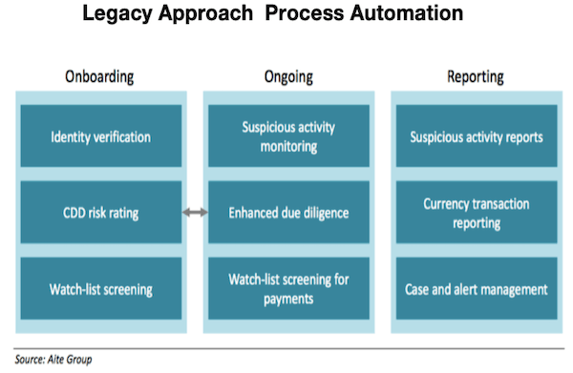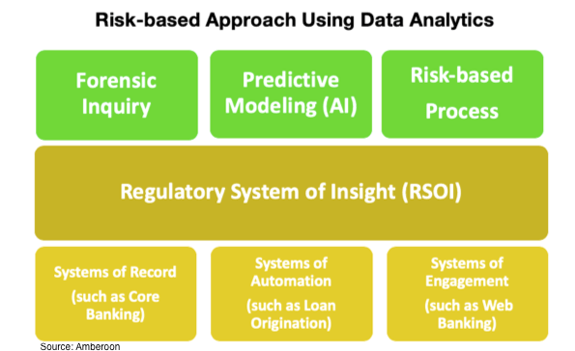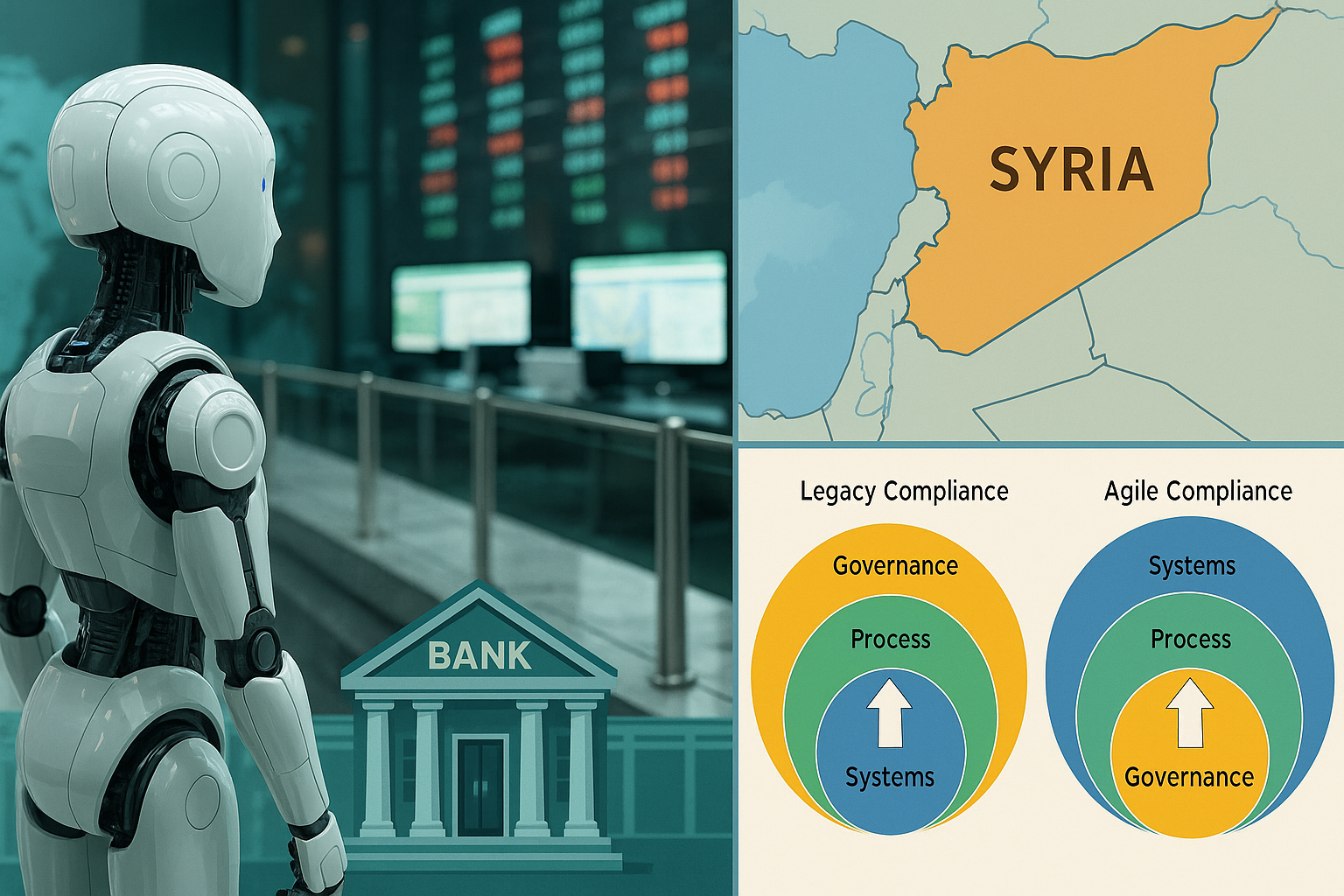What Differentiates Modern AML Solutions from Legacy AML?
The Legacy Approach
In last week's article, we discussed Rules Engines vs Machine Learning for AML/BSA/CFT compliance. In this article we differentiate legacy AML process from modern a Agile Compliance approach. The legacy AML process consists of on-boarding customers, transaction monitoring and reporting. These processes are hard-wired into the software by technology companies and have been used for years.

These software solutions use systems of record, that are designed to produce information but not insights. They are not designed for flexibility and are hard to modify. They also produce 90% or more false positives, which leads to a lot of wasted human resources.
The Modern Forensic Inquiry AML Approach
Investigating financial crime requires a flexible process to selectively drill down into certain information based on the results of inquiry. The forensic inquiry approach can be supported by modern technology which has evolved dramatically since 2015, particularly in the areas of Big Data, Machine Learning and Predictive Modeling. The forensic inquiry method is used to create a risk-based approach to AML, that is more effective and efficient than the legacy rules-engine workflow model.
New thinking treats AML as a data analytics problem rather than as a process automation problem.

A modern approach is based on the design principle that assumes that a bank must first measure and monitor operational activity before it can monitor and mitigate risk. Safety and soundness best-practices depend on information systems.These are Systems of Record, Systems of Engagement and Systems of Automation.
 Next generation systems use modern technology to create Systems of Insight that complement earlier Systems. Aggregation of data from disparate banking systems combined with predictive analytics can provide insights which are directly pertinent to operational risk management for a bank.
Next generation systems use modern technology to create Systems of Insight that complement earlier Systems. Aggregation of data from disparate banking systems combined with predictive analytics can provide insights which are directly pertinent to operational risk management for a bank.
Posts by Tag
- big data (41)
- advanced analytics (38)
- business perspective solutions (30)
- predictive analytics (25)
- business insights (24)
- data analytics infrastructure (17)
- analytics (16)
- banking (15)
- fintech (15)
- regulatory compliance (15)
- risk management (15)
- regtech (13)
- machine learning (12)
- quantitative analytics (12)
- BI (11)
- big data visualization presentation (11)
- AML (10)
- community banking (10)
- social media (10)
- AML/BSA (9)
- Big Data Prescriptions (9)
- analytics as a service (9)
- banking regulation (9)
- data scientist (9)
- social media marketing (9)
- financial risk (8)
- innovation (8)
- marketing (8)
- regulation (8)
- Comminity Banks (7)
- data analytics (7)
- money laundering (7)
- AI (6)
- AML/BSA/CTF (6)
- Big Data practicioner (6)
- CIO (6)
- Digital ID-Proofing (6)
- Performance Management (6)
- agile compliance (6)
- banking performance (6)
- digital banking (6)
- visualization (6)
- AI led digital banking (5)
- AML/BSA/CFT (5)
- KYC (5)
- data-as-a-service (5)
- email marketing (5)
- industrial big data (5)
- risk manangement (5)
- self-sovereign identity (5)
- verifiable credential (5)
- Hadoop (4)
- KPI (4)
- MoSoLoCo (4)
- NoSQL (4)
- buying cycle (4)
- instrumentation (4)
- mathematical models (4)
- sales (4)
- 2015 (3)
- bitcoin (3)
- blockchain (3)
- core banking (3)
- customer analyitcs (3)
- direct marketing (3)
- identity (3)
- manatoko (3)
- model validation (3)
- wearable computing (3)
- zero-knowledge proof (3)
- zkp (3)
- Agile (2)
- Cloud Banking (2)
- FFIEC (2)
- Internet of Things (2)
- IoT (2)
- PPP (2)
- PreReview (2)
- SaaS (2)
- Sales 2.0 (2)
- The Cloud is the Bank (2)
- Wal-Mart (2)
- data sprawl (2)
- digital marketing (2)
- disruptive technologies (2)
- email conversions (2)
- mobile marketing (2)
- new data types (2)
- privacy (2)
- risk (2)
- risk managemen (2)
- virtual currency (2)
- 2014 (1)
- 2025 (1)
- 3D printing (1)
- AMLA2020 (1)
- BOI (1)
- DAAS (1)
- Do you Hadoop (1)
- FinCEN_BOI (1)
- Goldman Sachs (1)
- HealthKit (1)
- Joseph Schumpeter (1)
- Manatoko_boir (1)
- NationalPriorites (1)
- PaaS (1)
- Sand Hill IoT 50 (1)
- Spark (1)
- apple healthcare (1)
- beneficial_owener (1)
- bsa (1)
- cancer immunotherapy (1)
- ccpa (1)
- currency (1)
- erc (1)
- fincen (1)
- fraud (1)
- health app (1)
- healthcare analytics (1)
- modelling (1)
- occam's razor (1)
- outlook (1)
- paycheck protection (1)
- personal computer (1)
- sandbox (1)
Recent Posts
Popular Posts
Every community bank CEO now faces unprecedented...
On May 13, 2025, the U.S. government announced...
In our continuing exploration of banking...



